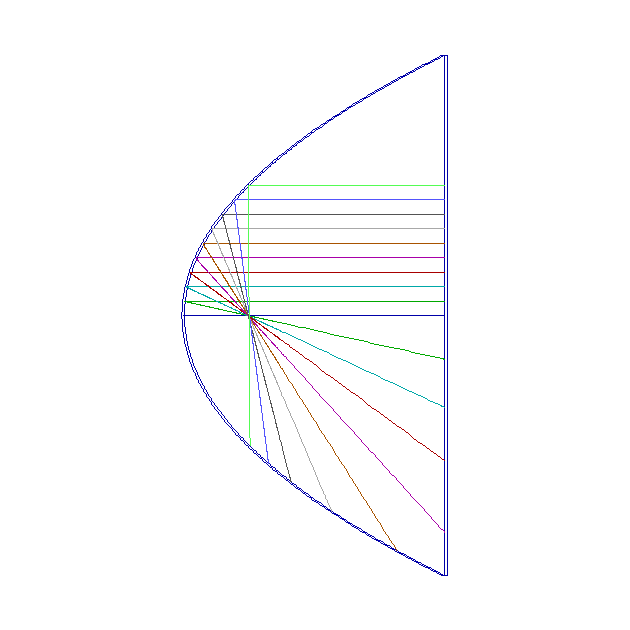Some of the benchmark and example files that illustrate this option are test2d27 and test3d33 for parabolic mirrors, test3d34 and xmpl3d95 for quadrupole ion traps, and shap2d05 for a hyperbolic electrode.
The figure below shows a simple 2D parabolic mirror (from test2d27). The 2 parabolic electrodes are at voltages 0 and -2 and so electrons of energy 1eV are reflected between to create a mirror. The incident parallel beam is correctly focussed to a point.

It is extremely easy to set up such a surface. Here the inner parabola has the equation z = r^2, which the user puts into the databuilder. After the user has specified the number of subdivisions etc, the program does the rest. A wide range of operators and functions can be used in the equations, which can have a length up to 50 characters.